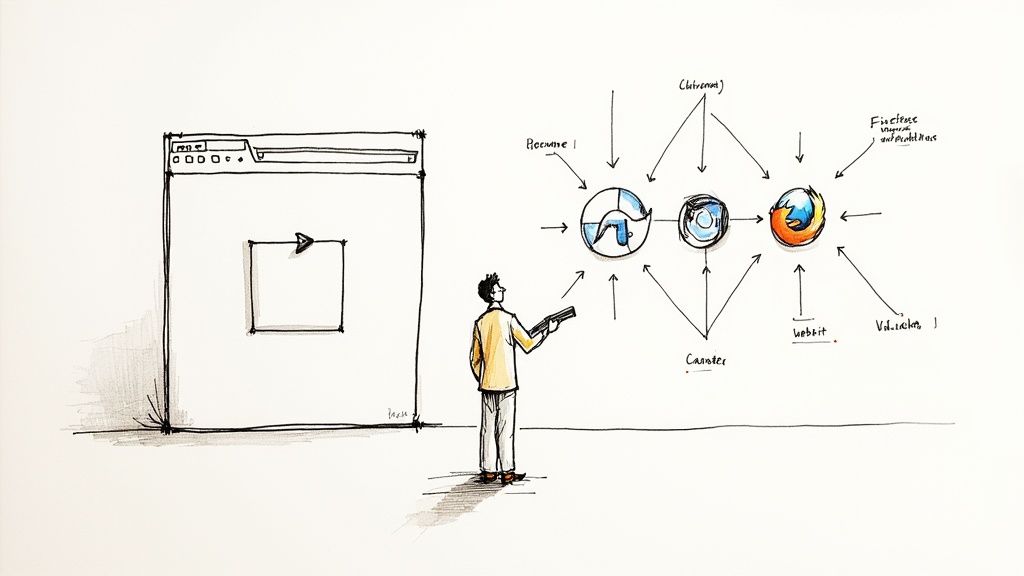Is GitHub Action Better than Jenkins?

There is an ever-present need for fast, efficient, and scalable automation tools in the rapidly expanding continuous integration and deployment space. Entire platforms have been built around the critical concerns of teams following CI/CD tenets to streamline their workflows better. These platforms simplify the often complicated testing pipelines through which code contributions must flow to merge with a main branch. Dropping these workflows altogether is no longer an option—the benefits have been proven and replicated by development teams worldwide.
Continuous integration techniques shorten the development process by automating unit testing before code merges into a shared repository. That way, bugs are rooted out much more rapidly, and developers can focus on their responsibilities without getting bogged down in the minutia of test configurations, etc. Feature-packed platforms and toolsets like GitHub and Jenkins make much of the behind-the-scenes busywork involved in implementing a CI/CD pipeline automatic, but you'll need to know how each one works to decide which is best for your team.
What is Jenkins? 👀
Jenkins is all about automation. It’s described as an "extensible automation server"—mainly used to power continuous integration and delivery processes behind the scenes. Jenkins boasts a self-contained design allowing it to be deployed in many different operating system environments, and it’s highly extensible.
Here are a few of the pros of using Jenkins to simplify your CI/CD strategy:
- It offers an impressive ecosystem of plugins to simplify the process of integrating with other development tools and hosting environments. This can help your team save time up front and get a promising pipeline in place in less time.
- It also has a relatively simple web-based GUI that makes it easier to understand and maintain.

As you can see, Jenkins is a relatively mature product and is quite capable of providing great functionality for teams looking to implement a CI/CD pipeline smoothly. However, Jenkins is far from a perfect solution. The platform has several issues that may prove significant enough for your team to turn elsewhere for CI/CD automation.
Check out a few good reasons not to use Jenkins:
- It’s not necessarily easy to alter once you have it up and running. Anything from a simple change of settings to a minor plugin installation can lead to your Jenkins server failing to start back up. Solving such issues can often involve hours spent perusing open-source software forums searching for an answer.
- It has a reputation for being too complex, especially once you have it running for your current build requirements. The plugin ecosystem can quickly become a double-edged sword as multiple plugins make for a more inefficient and vulnerable server that only experts can safely interact with.
What is GitHub Actions? 🔍
GitHub Actions is a CI/CD pipeline automation service offered by GitHub that streamlines many things at once—without devolving into excessive complexity. Individual actions are easy to create, and there are already many to choose from that are free to use and open to all kinds of configurations. Automating your workflows with Github Actions is also completely free if your project is open source. Closed-source projects can use up to 2,000 runner minutes per month free of charge too.

Here are a few reasons you might want to consider using GitHub Actions to manage your project's CI/CD pipeline:
- Building and maintaining your pipeline with GitHub Actions is as easy as writing a bit of Javascript or creating a container Action. You can also set up Actions to run simple scripts as needed, making it highly flexible.
- GitHub Actions can be triggered by any event that happens within your repository. This makes it possible to do anything from automating unit tests to adding labels to pull requests.
- Workflows and jobs can be referenced from each other, allowing you to spin up new tests that leverage old ones quickly.
- Real-time logging makes it easier to click and share specific CLI lines while a given workflow is underway.
- Matrix builds make it possible for developers to have multiple operating systems and runtimes tested simultaneously without increasing the complexity of their pipelines.
GitHub Actions is a precious service for developers to tap into. An immense array of turnkey Actions coupled with the ease of configuration and maintenance offered by the standard Git flow make it a significant step forward for CI/CD automation practices.
Of course, it’s not necessarily a perfect solution. These are a few known drawbacks to using GitHub Actions:
- Scheduled workflows are spotty—they may or may not run as per your requested schedule. A delay between 3 and 10 minutes or so is to be expected.
- Projects with private codebases will need to pay for runner minutes to ensure their workflows can execute.
GitHub Actions vs. Jenkins 🎯
Both Jenkins and GitHub Actions are powerful options worth considering when planning out your project's CI/CD strategy. The tools you choose to automate critical processes and piece together your development pipeline often play a pivotal role in determining the viability of your feature roadmap and the speed at which your team can progress.

But overall, one of these two options is likely a much better choice for most projects: GitHub is the clear winner. GitHub Actions comes across as the best bet most developers can make when choosing a long-term CI/CD solution.
Why GitHub? 🥇
There are numerous reasons to choose GitHub Actions over Jenkins, but incredible extensibility coupled with relative simplicity stands out as pivotal. GitHub Actions is flexible enough to support almost any conceivable workflow while being powerful enough to handle enterprise-grade concerns. Best of all, with Mergify, you can count on having access to a heap of additional automation features that mesh exceptionally well with Actions and the Git flow. Read more about Mergify and how helpful it can be for your dev team today.





